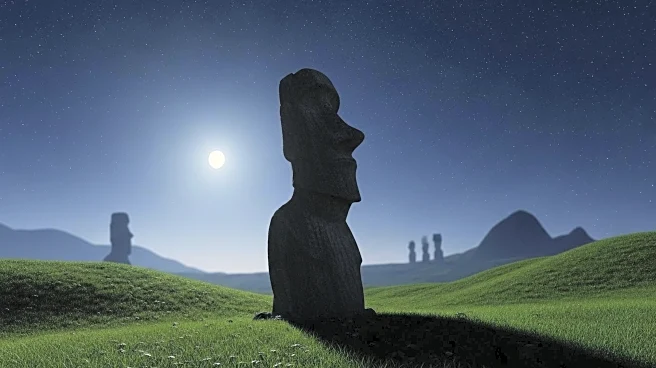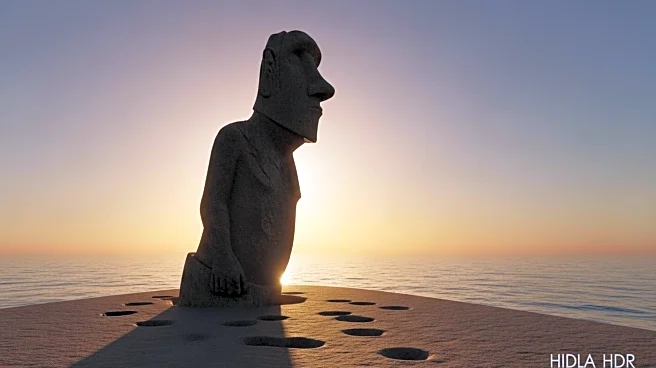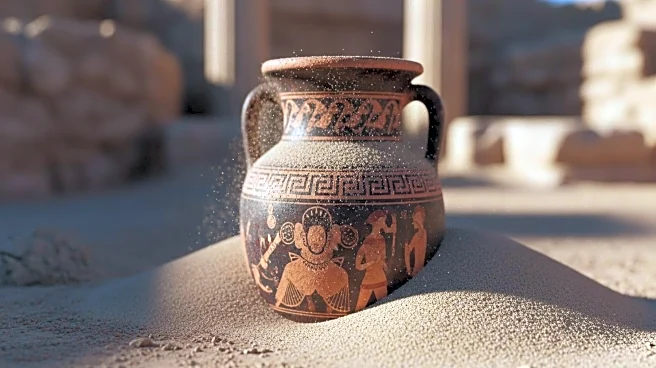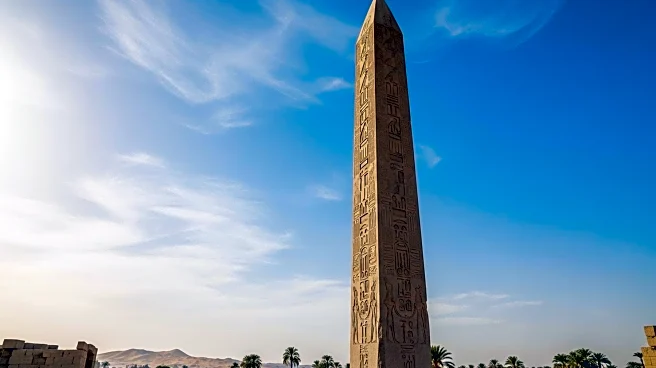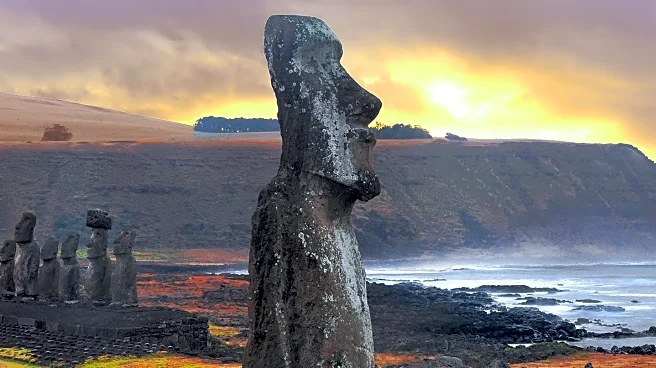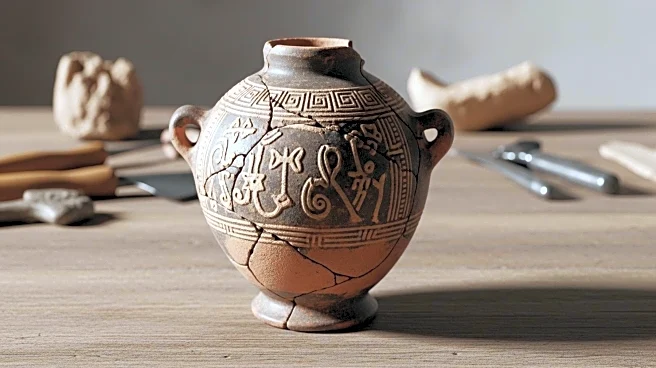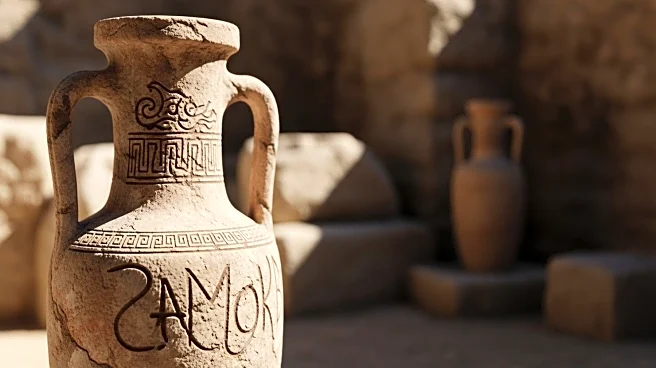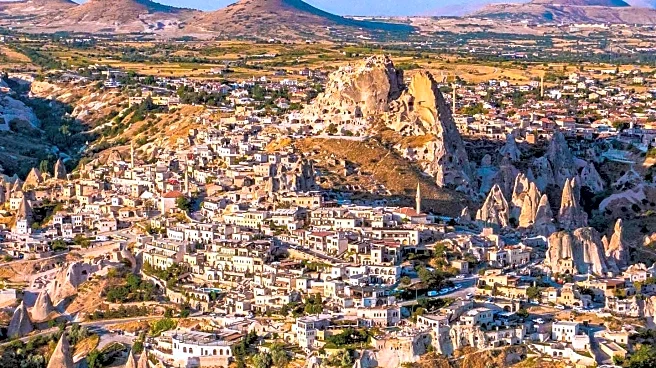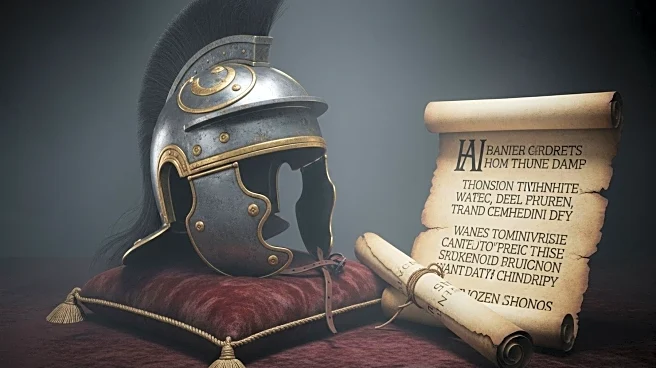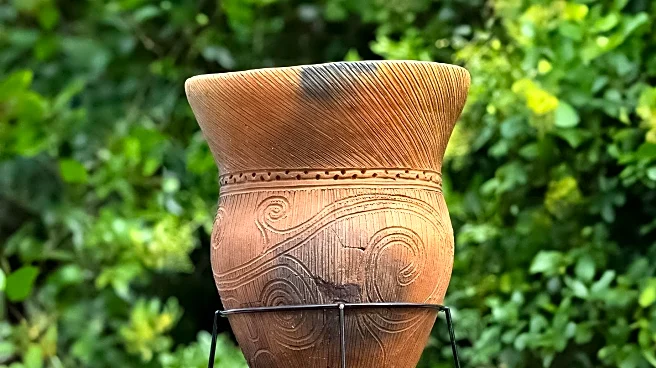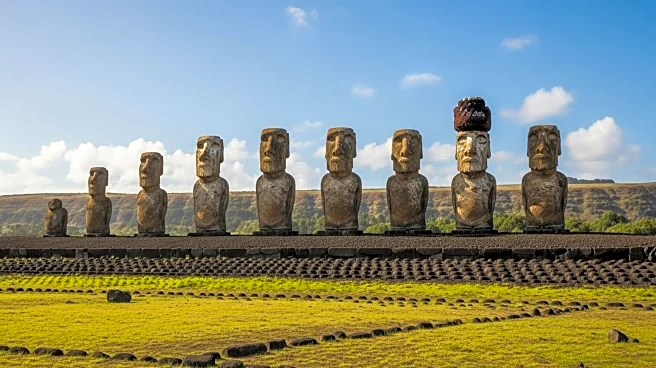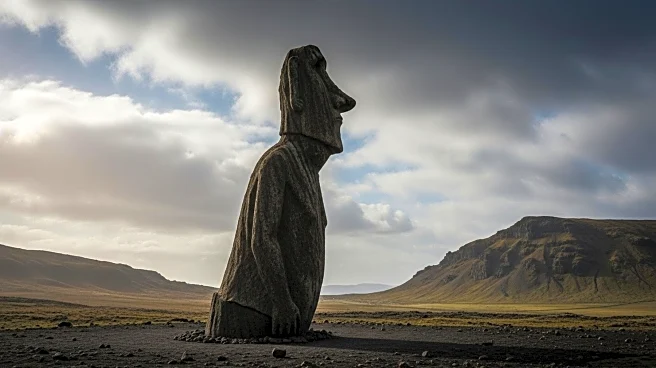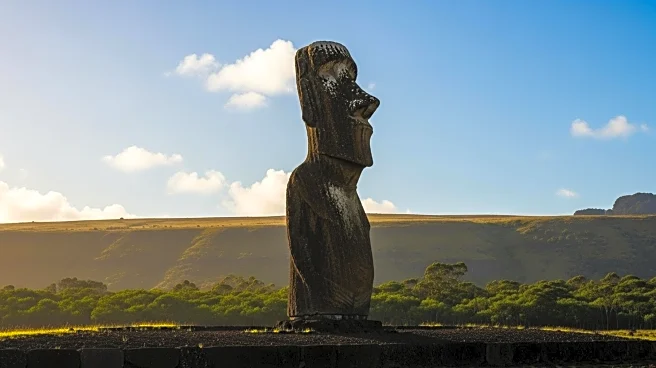What is the story about?
What's Happening?
A team of U.S. anthropologists and archaeologists has provided new evidence supporting the theory that the moai statues on Easter Island were moved using a 'walking' technique. This method involves rocking the statues from side to side while maintaining a forward lean, allowing them to be transported along prepared roads. The research, led by Carl Lipo and Terry Hunt, challenges the traditional belief that the statues were moved horizontally on wooden rollers, a theory that has been linked to environmental degradation on the island. The study, published in the Journal of Archaeological Science, uses physics, 3D modeling, and experimental validation to argue that the statues' D-shaped bases and low centers of gravity made them suitable for this method of transportation.
Why It's Important?
The findings have significant implications for understanding the history and culture of the Rapa Nui people, as well as the environmental impact of their practices. By demonstrating that the statues could be moved without deforestation, the research challenges the narrative that the Rapa Nui caused their own ecological collapse. This could lead to a reevaluation of historical accounts and theories about Easter Island's past. Additionally, the study highlights the ingenuity and engineering skills of the Rapa Nui, offering a more nuanced view of their society and its capabilities.
What's Next?
The research may prompt further studies into the transportation methods used by ancient civilizations, potentially uncovering new insights into their engineering techniques. It could also lead to increased interest in preserving and studying the moai statues and the roads used for their movement. As the debate continues, scholars may explore other aspects of Rapa Nui culture and history, contributing to a broader understanding of the island's heritage.
Beyond the Headlines
The study raises questions about the role of oral traditions and folklore in preserving historical knowledge. The Rapa Nui's claim that the statues 'walked' has been dismissed as superstition, yet it aligns with the findings of modern research. This underscores the importance of considering indigenous narratives in archaeological studies, as they may offer valuable insights into historical practices.
AI Generated Content
Do you find this article useful?
